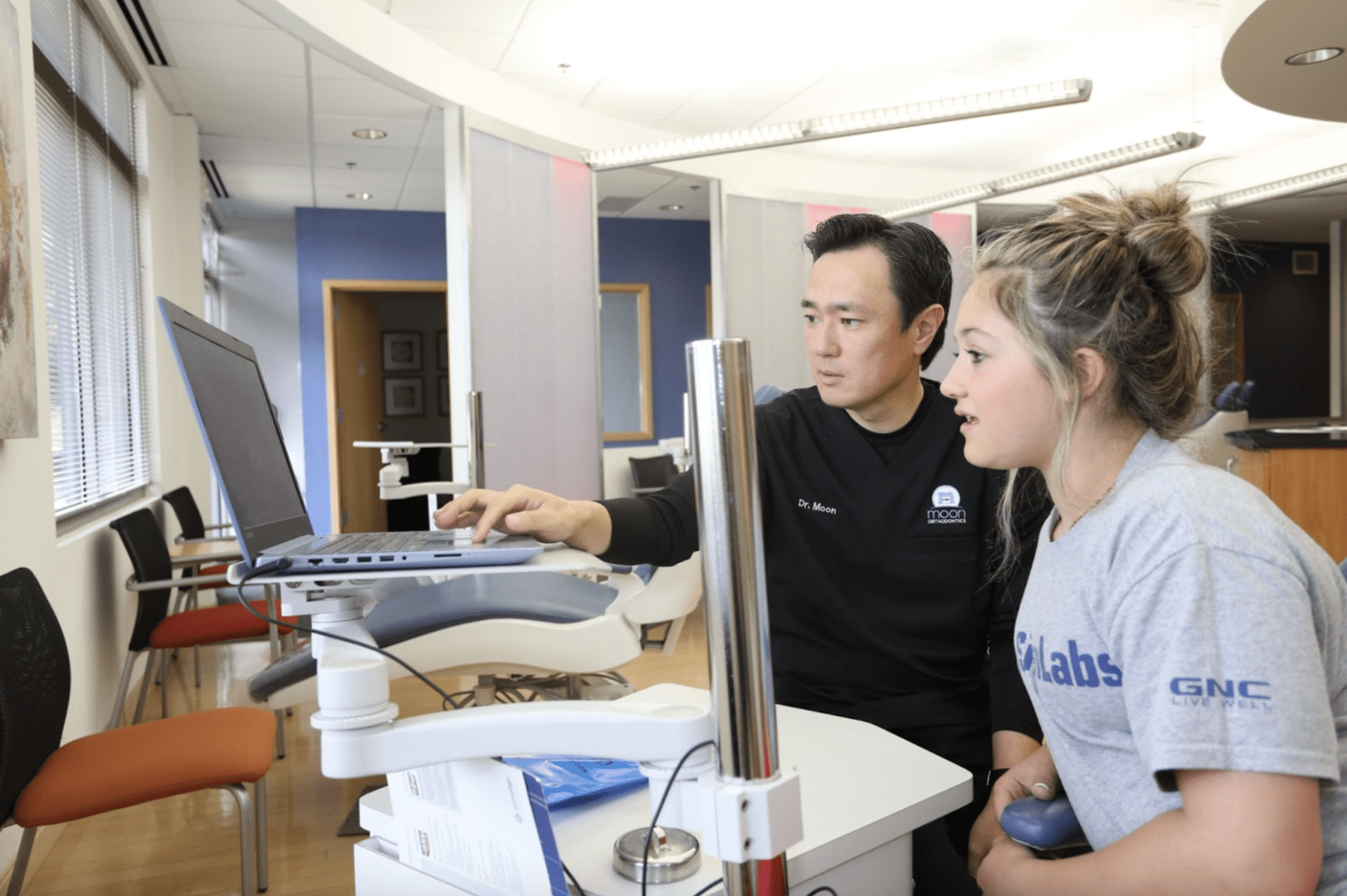The last few decades have seen many advancements in orthodontic technology. Braces of the past have been known to be awkward, bulky, and at times painful. But nowadays, braces are lighter, more discreet, and more comfortable to wear than they’ve ever been. Even better, they come in many more treatment options for patients to choose from. At Moon Orthodontics, our office has all the up-to-date technology at our disposal to give you the best treatment possible. Let’s take a look at the different types of braces our team offers.
There are a variety of benefits to getting braces, no matter which type of treatment you choose. At Moon Orthodontics, our state-of-the-art technology and well-trained team are able to successfully treat many dental issues, including:
- Crowded teeth
- Gaps between teeth
- Protruding teeth
- Overjet teeth
- Spacing
- Overbite or underbite
- Crossbite
- Openbite
Each patient has a unique smile, so our team creates a personalized treatment plan for everyone who visits our office based on their specific needs and goals. If you’ve been considering orthodontic treatment to achieve a better, healthier smile, we have a wide range of affordable options available for patients of all ages, and that includes braces.
Types of braces
Metal braces
Metal braces are the most widely recognized type of orthodontic treatment. These braces are made out of stainless steel and other high-quality metals. As a result, they are very durable and long-lasting. Metal braces don’t need some of the complicated technology or expensive equipment that newer treatments do, so they also tend to be a more affordable option. Plus, metal braces come with bite-correcting elastic bands, which come in a variety of colors so you can add some fun personality to your treatment!
We also have metal braces available in Damon braces, which require no elastic bands and no steel ties. This innovative technology creates less friction and results in greater comfort for the patient. On top of that, Damon braces can reduce both your treatment time and the number of adjustments you’ll need.
Ceramic braces
Also called clear braces, ceramic braces function in much the same way traditional metal braces do but are made from tooth-colored ceramic brackets. Ceramic braces are roughly the same size and shape as metal braces, but they blend in with your natural smile for a more discreet treatment option. These types of braces are particularly popular amongst adults and older teens due to their almost invisible appearance.
The main disadvantage of ceramic braces is that they are slightly more prone to chipping or cracking. Since metal braces can tolerate more pressure than ceramic ones, our team may only suggest them if you have more complex oral issues. But with the right attention and care, they can be just as effective as traditional metal braces. They can also be a bit pricier, but lucky for you, Dr. Moon will determine a treatment fee that fits your specific orthodontic needs, and our office will do everything we can to accommodate you and your budget.
Clear aligners
Don’t want to deal with brackets and wires? There’s a treatment for that. Invisalign and ULab systems are made up of clear, removable aligners custom-made to fit comfortably over your teeth. You will likely have to wear them twenty to twenty-two hours per day throughout the treatment process and replace them every one to two weeks for the next aligner in the system, as directed by your orthodontist. Much like ceramic braces, this is a popular option for older patients because of its more discreet aesthetic.
Clear aligners offers patients a little more flexibility compared to traditional braces. You can remove them during meals, so there are fewer food restrictions, and it’s easy to keep your teeth and gums clean and healthy since you don’t have to work around wires and brackets. When it’s time to brush and floss, just take them out and rinse them and you’re good to go!
Caring for braces
No matter what type of orthodontic treatment you choose, there will have to be a few adjustments to your oral hygiene routine to accommodate your new braces. If you struggle with brushing and flossing effectively while wearing braces, there are tools available to make the process a bit easier. Waterpiks help rinse any hard-to-reach areas and ortho picks can assist with flossing. We recommend brushing twice a day for at least two minutes each time and flossing every night before bed to keep your teeth and gums healthy.
Diet changes are also a part of caring for your braces. Foods that are sticky or crunchy can damage your brackets and wires, so you will likely have to avoid these kinds of foods during your treatment. These changes will take time to adjust to, but you will eventually get used to them and they won’t last forever. Any minor frustrations will be more than worth it once your braces come off and see how much your smile has improved.
During your treatment process, you will have to schedule follow-up visits in our office every four to eight weeks. During these appointments, our doctors will change the bands that are attached to the brackets and may replace the wire as well. These check-ups are usually brief, so you can get back to school or work on time. There may be residual soreness following these adjustments, but this should go away quickly. These visits are a very important part of your overall treatment plan. We want to help you get the exceptional results you deserve, so don’t forget to stop by for a visit!
Get the most from your smile at Moon Orthodontics
You deserve the right care on the road to your ideal smile. With the right orthodontists to guide you through the right treatment, better confidence is right around the corner. If you have any questions or concerns about oral hygiene during treatment, our expert team is always here to help set your mind at ease. Are you interested in learning more about being proactive with your smile? Get in touch with us today to schedule a FREE consultation or follow-up appointment with our Overland Park or Olathe office!
 Free Consult
Free Consult


